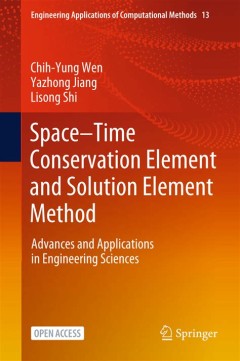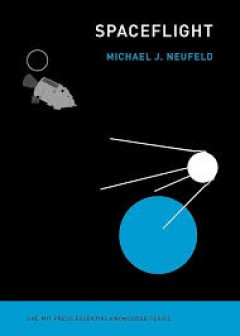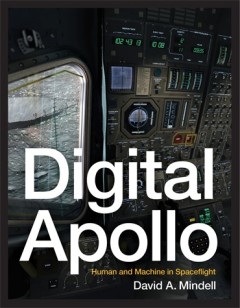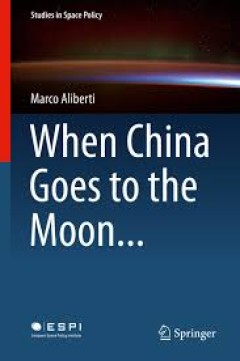Filter by

Variable Pitot-Triebwerkseinlässe für kommerzielle Überschallflugzeuge : K…
- Edition
- -
- ISBN/ISSN
- 978-3-658-35456-5
- Collation
- -
- Series Title
- -
- Call Number
- -
- Edition
- -
- ISBN/ISSN
- 978-3-658-35456-5
- Collation
- -
- Series Title
- -
- Call Number
- -

Numerical Simulation of Pulsed Plasma Thruster
This is an open access book. It is valuable in gaining an understanding of the working mechanism of pulsed plasma thrusters. It facilitates the evaluation of the thruster's working characteristics and propulsive performance, thereby providing a crucial theoretical foundation and reference for the design, development, and engineering application of pulsed plasma thrusters. Additionally, this boo…
- Edition
- 1
- ISBN/ISSN
- 9789819779581
- Collation
- XIV, 301 hlm; ill., lamp.,
- Series Title
- -
- Call Number
- -

Single-Event Effects, from Space to Accelerator Environments = Analysis, Pred…
This book describes the fundamental concepts underlying radiation-induced failure mechanisms in electronic components operating in harsh environments, such as in space missions or in particle accelerators. In addition to providing an extensive overview of the dynamics and composition of different radiation environments, the authors discuss the failure mechanisms, known as single-event effects (…
- Edition
- 1
- ISBN/ISSN
- 9783031717239
- Collation
- X, 141 hlm; ill., lamp.,
- Series Title
- -
- Call Number
- -

Solar Thermal Thruster
This open access book focuses on the field of aerospace propulsion theory and engineering. The book takes the solar thermal thruster as the research object, has carried on the solar thermal thruster working process theoretical analysis, the numerical simulation and the experimental verification, and has revealed the solar thermal thruster internal working mechanism, and a design optimization me…
- Edition
- 1
- ISBN/ISSN
- 9789819774906
- Collation
- XV, 193 hlm; ill., lamp.,
- Series Title
- -
- Call Number
- -

Space–Time Conservation Element and Solution Element Method : Advances and …
This open access book introduces the fundamentals of the space–time conservation element and solution element (CESE) method, which is a novel numerical approach for solving equations of physical conservation laws. It highlights the recent progress to establish various improved CESE schemes and its engineering applications. With attractive accuracy, efficiency, and robustness, the CESE method …
- Edition
- 1
- ISBN/ISSN
- 9789819908769
- Collation
- IX, 139 hlm,: ill, lamp;
- Series Title
- 13
- Call Number
- -

Spaceflight :a concise history
A concise history of spaceflight, from military rocketry through Sputnik, Apollo, robots in space, space culture, and human spaceflight today. Spaceflight is one of the greatest human achievements of the twentieth century. The Soviets launched Sputnik, the first satellite, in 1957; less than twelve years later, the American Apollo astronauts landed on the Moon. In this volume of the MIT Press E…
- Edition
- -
- ISBN/ISSN
- 9780262350457
- Collation
- 1 online resource.
- Series Title
- -
- Call Number
- -

Digital Apollo : Human and Machine in Spaceflight
How human pilots and automated systems worked together to achieve the ultimate in flight--the lunar landings of NASA's Apollo program.As Apollo 11's Lunar Module descended toward the moon under automatic control, a program alarm in the guidance computer's software nearly caused a mission abort. Neil Armstrong responded by switching off the automatic mode and taking direct control. He stopped mo…
- Edition
- -
- ISBN/ISSN
- -
- Collation
- -
- Series Title
- -
- Call Number
- -

Digital Apollo Digital Apollo: Human and Machine in Spaceflight
How human pilots and automated systems worked together to achieve the ultimate in flight--the lunar landings of NASA's Apollo program.As Apollo 11's Lunar Module descended toward the moon under automatic control, a program alarm in the guidance computer's software nearly caused a mission abort. Neil Armstrong responded by switching off the automatic mode and taking direct control. He stopped mo…
- Edition
- -
- ISBN/ISSN
- -
- Collation
- 1 online resource (xiii, 359 pages) : illustrations
- Series Title
- -
- Call Number
- -

When China Goes to the Moon...
This book is about China’s ambitions in its most complex and internationally visible space endeavor, namely its human space exploration programme. It provides a comprehensive reflection on China´s strategic direction and objectives in space, including in particular those set forth in its human spaceflight programme and analyses the key domestic and external factors affecting the country’s …
- Edition
- -
- ISBN/ISSN
- 978-3-319-19473-8
- Collation
- -
- Series Title
- -
- Call Number
- -

Weapons in space :technology, politics, and the rise and fall of the Strategi…
"This is the first historical work that situates the Strategic Defense Initiative within a new phase in the militarization of space, uncovering a largely secret history of the role of military space technologies in late-Cold War U.S. defense strategy and foreign relations"--OCLC-licensed vendor bibliographic record.
- Edition
- -
- ISBN/ISSN
- 9780262377386
- Collation
- 1 online resource
- Series Title
- -
- Call Number
- -
 Computer Science, Information & General Works
Computer Science, Information & General Works  Philosophy & Psychology
Philosophy & Psychology  Religion
Religion  Social Sciences
Social Sciences  Language
Language  Pure Science
Pure Science  Applied Sciences
Applied Sciences  Art & Recreation
Art & Recreation  Literature
Literature  History & Geography
History & Geography